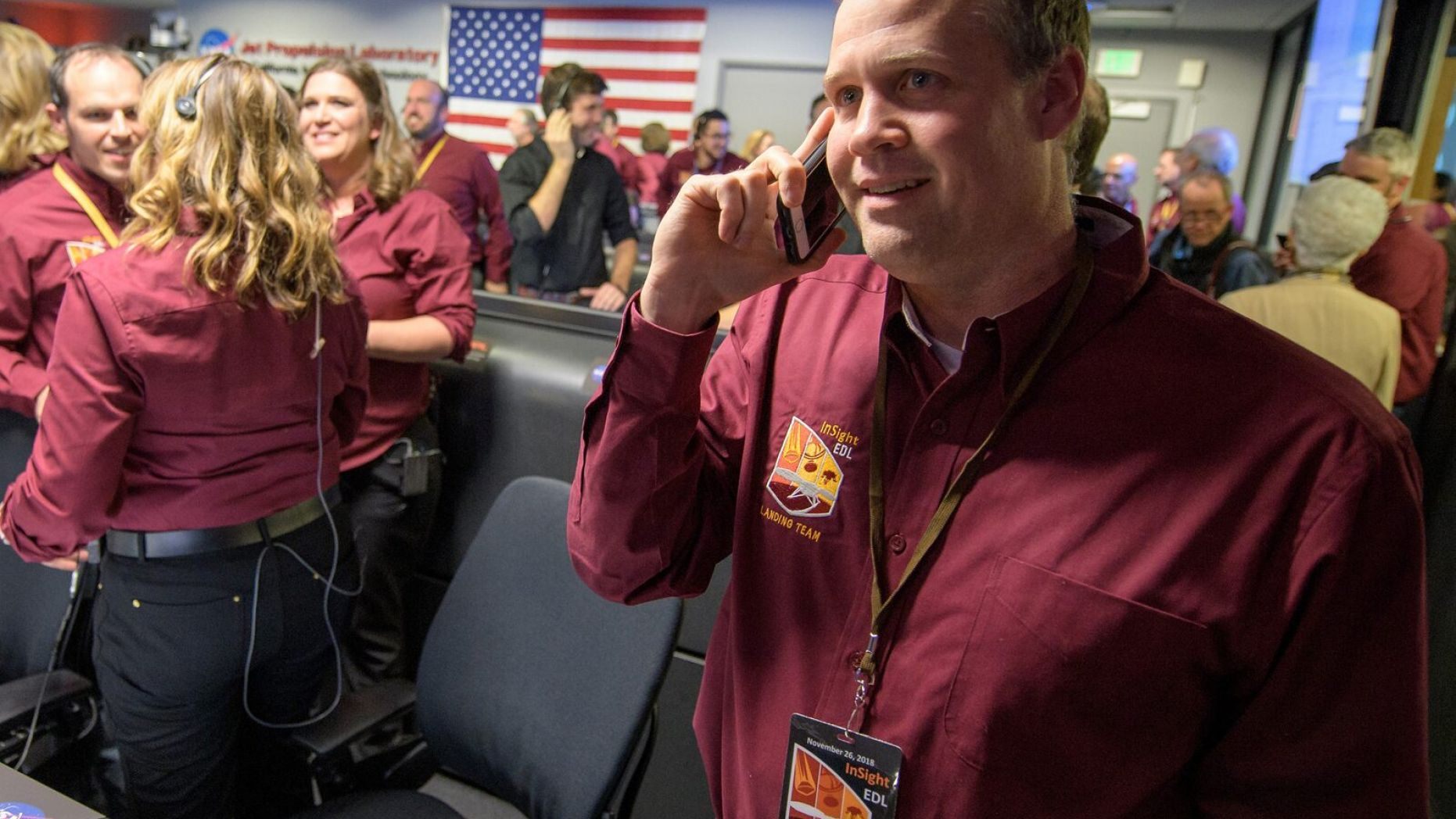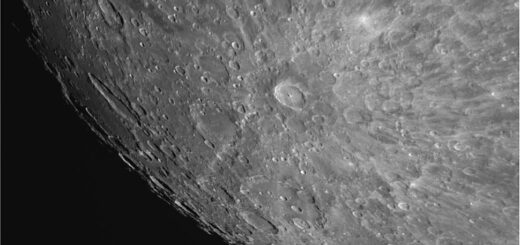As NASA celebrates Mars landing, a busy future awaits, agency’s chief says

NASA Administrator Jim Bridenstine receives a congratulatory call from Vice President Mike Pence after receiving confirmation of the successful landing of the agency’s InSight spacecraft on Mars on Nov. 26, 2018 at the Mission Support Area of NASA’s Jet Propulsion Laboratory in Pasadena, California.
It’s a busy time for NASA, and as the agency’s Jet Propulsion Laboratory (JPL) celebrated the successful touchdown of its InSight Mars lander Monday, agency Administrator Jim Bridenstine is focused on the future.
Bridenstine shared a few words from the bustling mission control center, moving away from the celebrations to talk with NASA TV.
“I’ll tell you, it was intense, and you could feel the emotion,” Bridenstine told Gay Yee Hill, a spokesperson for JPL, during the landing webcast. “It was very, very quiet when it was time to be quiet and, of course, very celebratory with every little new piece of information that was received. It’s very different being here than watching it on TV, by far. I can tell you that for sure now that I’ve experienced both.” [NASA’s InSight Mars Lander: Amazing Landing Day Photos!]
Bridenstine added that right after the landing was confirmed he got a call from a number that came up “with all zeros” on his phone. It proved to be Mike Pence, the U.S. vice president, calling to congratulate the team. Pence is also chairman of the National Space Council.
InSight’s successful landing after a nearly seventh-month journey is hugely significant for Mars scientists, who now have a tool to probe deeper into the planet than ever before. After its solar arrays successfully deploy, the lander will probe below the planet’s surface and measure meteor impacts and other seismic activity to learn about Mars’ interior structure. Researchers said during the webcast that the first science data should come in around March of 2019.
Looking forward to the agency’s future, Bridenstine rattled off a long list of upcoming events for NASA: A U.S. astronaut is launching to the International Space Station on a Russian Soyuz spacecraft on Dec. 3, the first science data from the Parker Solar Probe comes back Dec. 7, and OSIRIS-REx will reach the asteroid Bennu near the end of December.
Then, on Jan. 1, the New Horizons probe that flew by Pluto in July of 2015 will reach the distant solar system object Ultima Thule, sending back images taken at close range of the incredibly faraway object.
“You ask what’s happening next?” Bridenstine said. “Right now, at NASA there is more underway probably than [since] I don’t know how many years past. It’s like there’s a drought and all of a sudden all these activities at once. So, we’re busy. We’re going to be working through the holiday — a lot of amazing discoveries to be made, and we’re looking forward to them.”
Coming back to InSight, Bridenstine added that everything we learn about Mars, such as whether it has water below its surface, will help humans eventually visit and access resources on the planet. He added that the agency’s current directive is to send humans back to the moon first — that “we need to use the moon as a proving ground to accelerate our path to Mars” — but that “in the meantime, we’re doing missions like InSight to learn as much about Mars as possible.”
At a press briefing later in the day, Bridenstine talked at length NASA’s plans for moon exploration but emphasized again that Mars was on the horizon.
“We’re proving capability and technology to go to Mars even faster than we could go if we didn’t use the moon as a tool,” Bridenstine said. “The reality is, yes, your nation right now is extremely committed to getting to Mars, and using the moon as a tool to achieve that objective as fast as possible.”



 Creators of mankind
Creators of mankind Description of “Tall white aliens”
Description of “Tall white aliens” Where they came from?
Where they came from? About hostile civilizations
About hostile civilizations The war for the Earth
The war for the Earth “Tall white aliens” about eternal life
“Tall white aliens” about eternal life Video: “Nordic aliens”
Video: “Nordic aliens” Aliens
Aliens Alien encounters
Alien encounters The aliens base
The aliens base UFO
UFO Technology UFO
Technology UFO Underground civilization
Underground civilization Ancient alien artifacts
Ancient alien artifacts Military and UFO
Military and UFO Mysteries and hypotheses
Mysteries and hypotheses Scientific facts
Scientific facts


















